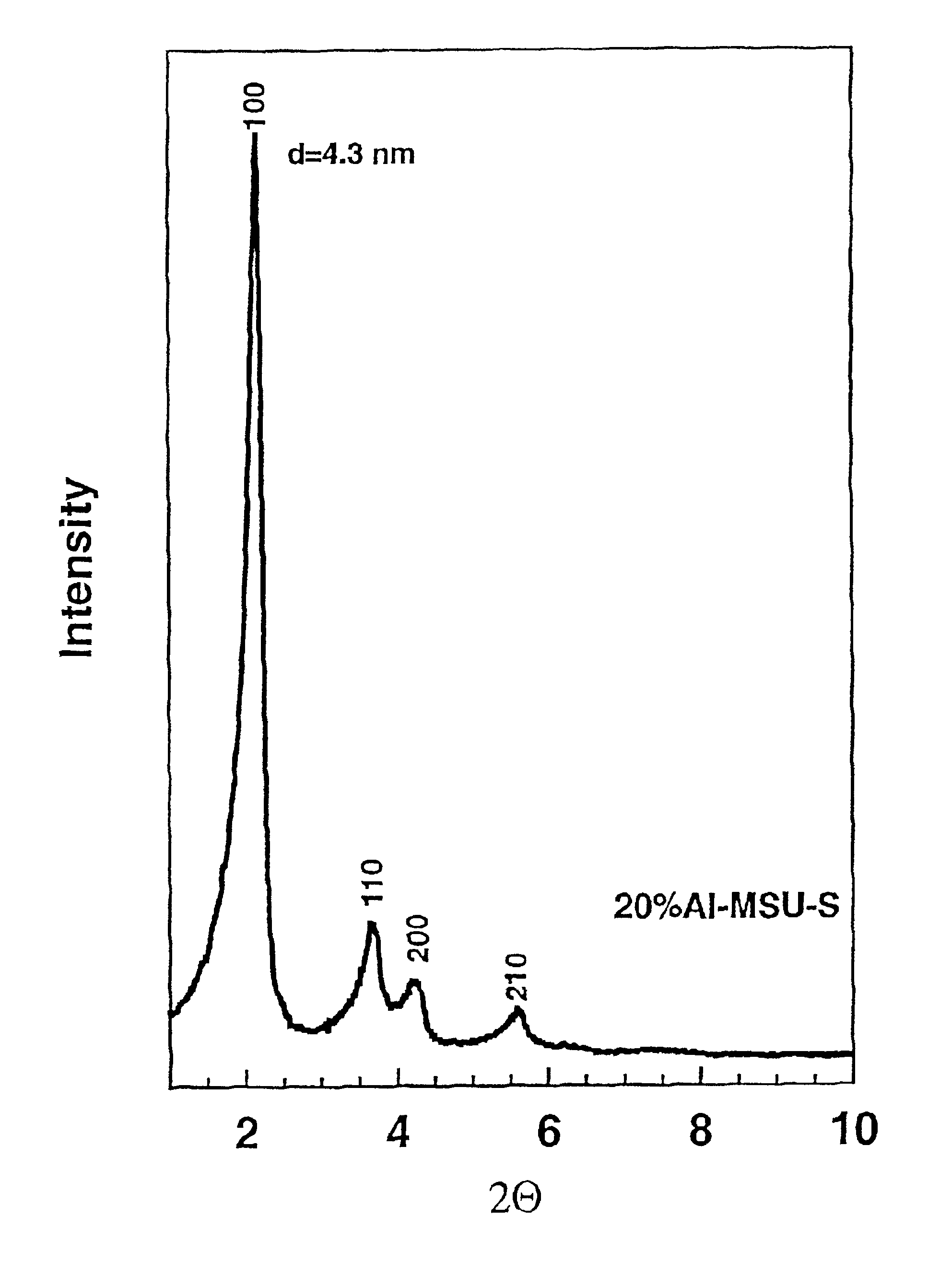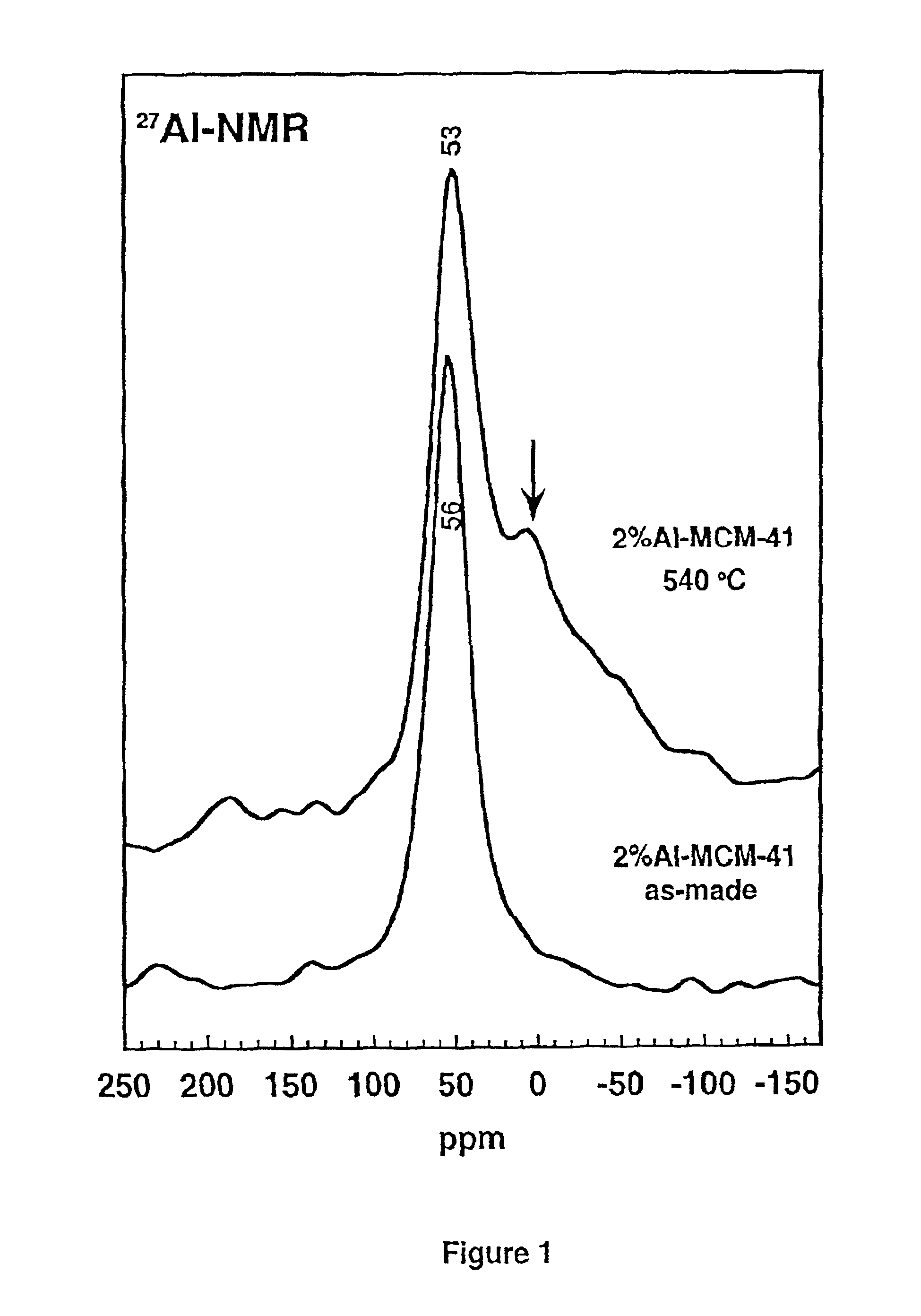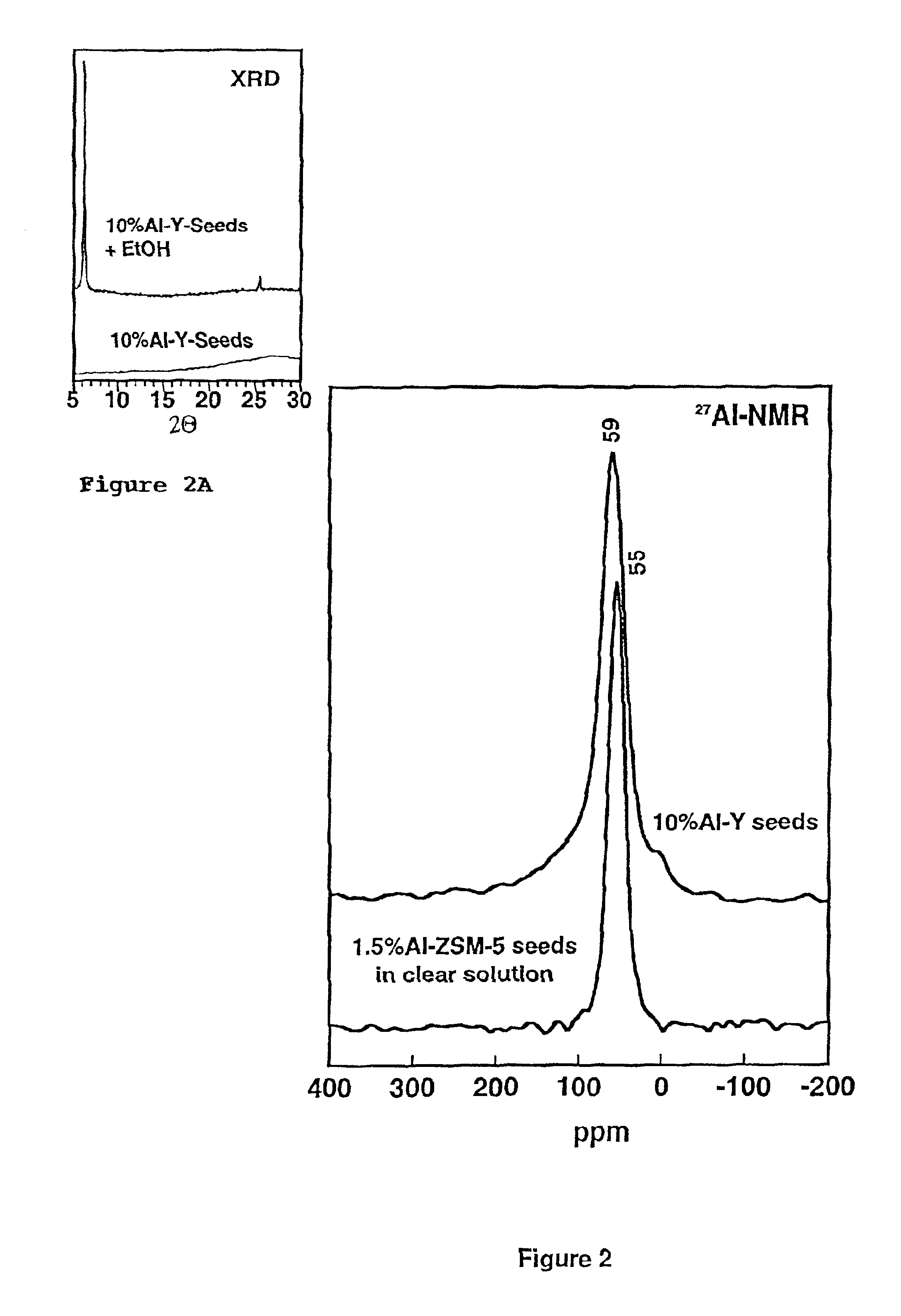Ultrastable porous aluminosilicate structures and compositions derived therefrom
- Summary
- Abstract
- Description
- Claims
- Application Information
AI Technical Summary
Benefits of technology
Problems solved by technology
Method used
Image
Examples
examples 2 to 3
These two Examples illustrate according to the teachings of the present invention the preparation of protozeolitic aluminosilicate precursors (zeolite seeds) that are useful for the supramolecular assembly of hexagonal, cubic, lamellar, wormhole, and cellular foam framework structures that are steam-stable in comparison to like structured compositions obtained from conventional aluminosilicate precursors. The preferred aluminosilicate precursors of this invention contain nanosized aluminosilicate clusters in which the aluminum is in tetrahedral coordination and linked through bridging oxygen atoms to silicon tetrahedra that in are largely connected to other tetrahedra. These nanosized aluminosilicate precursors are capable of promoting the crystallization of atomically ordered zeolite phases when mixed with suitable gels and aged under hydrothermal conditions. Owing to their ability to nucleate zeolitic phases, such as zeolites type Y (more precisely faujasitic zeolites) and ZSM-5 (...
example 3
describes the preparation of a solution of Zeolite ZSM-5 seeds containing 1.5 mole % aluminum according to the general method described by deMoor et al., J. Phys. Chem. B 103 1639 (1999). A reaction mixture containing 6.7 mmole of tetrapropylammonium ions as the zeolite seeds director (6.7 mL of 1.0 M tetrapropylammonium hydroxide), 0.50 mmole sodium aluminate (Strem Chemical) and 33.3 mmole fumed silica (Aldrich Chemical) in 1270 mmole of water was aged with stirring at 50° C. for 18 hr to form the seeds.
27Al-MAS NMR spectra of the protozeolitic seeds compositions were recorded on a Varian VRX 400S instrument in a zirconia rotor at spinning speeds of 2 kHz and 900 Hz, respectively. The spectra are shown in FIG. 2. FIG. 2A provides the X-ray diffraction pattern of the 10% Al—Y-seeds obtained by smearing the Y-seeds gel on a glass plate in the absence (bottom) or the presence of ethanol (top) to help promote the aggregation of the aluminosilicate precursor. The single 27Al NMR lines ...
examples 4 to 6
These three Examples were designed to illustrate the use of nanoclustered zeolite Y seeds according to art of the present invention for the preparation of steam-stable mesoporous aluminosilicate molecular sieves with long range hexagonal order (denoted hexagonal Al-MSU-S from zeolite Y seeds) even at high tetrahedral aluminum concentrations in the framework. The hexagonal order is retained even after the mesostructures have been calcined to remove the surfactant. These mesostructures, as formed from zeolite Y seeds, also exhibited a 27Al-NMR resonance with a chemical shift substantially greater than 56 ppm, indicating a zeolitic type Y connectivity of SiO4 and AlO4 units in the framework walls. This minimum chemical shift value for our new aluminate mesostructures as formed from zeolite Y seeds is larger than the previously reported literature values for all known aluminated derivatives of silica mesostructures, regardless of the long range structural order of the mesostructure or t...
PUM
| Property | Measurement | Unit |
|---|---|---|
| Temperature | aaaaa | aaaaa |
| Temperature | aaaaa | aaaaa |
| Temperature | aaaaa | aaaaa |
Abstract
Description
Claims
Application Information
 Login to View More
Login to View More - R&D
- Intellectual Property
- Life Sciences
- Materials
- Tech Scout
- Unparalleled Data Quality
- Higher Quality Content
- 60% Fewer Hallucinations
Browse by: Latest US Patents, China's latest patents, Technical Efficacy Thesaurus, Application Domain, Technology Topic, Popular Technical Reports.
© 2025 PatSnap. All rights reserved.Legal|Privacy policy|Modern Slavery Act Transparency Statement|Sitemap|About US| Contact US: help@patsnap.com



